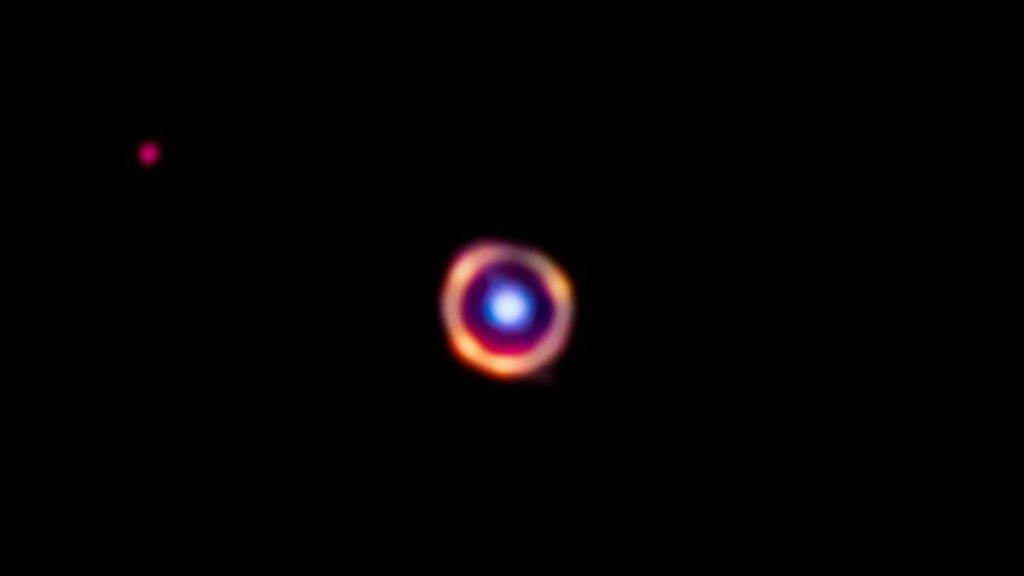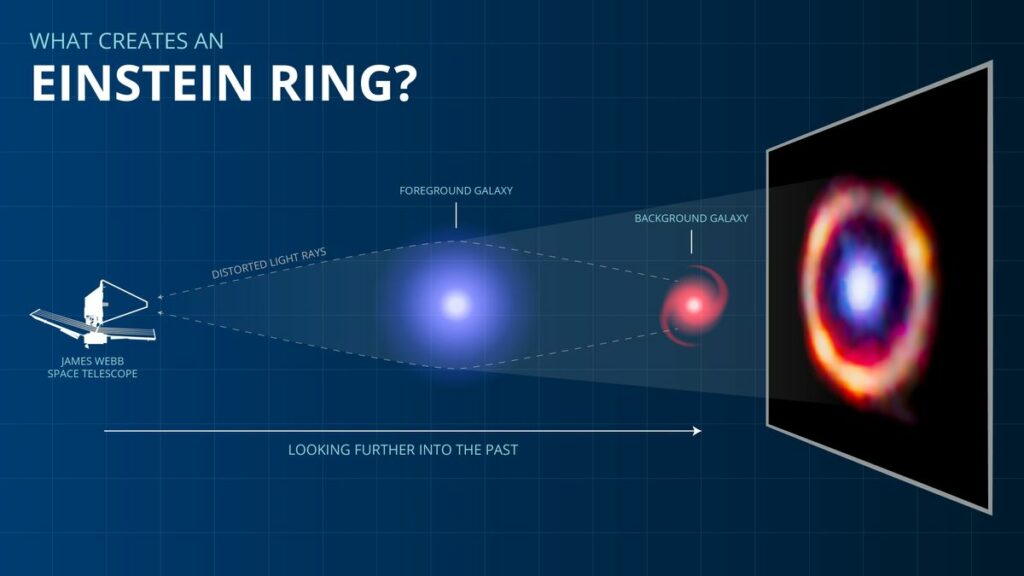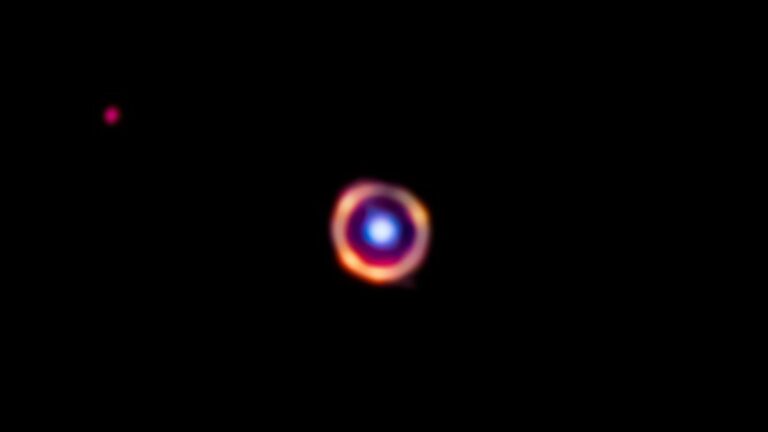The JWST discovered the earliest complex organic molecules ever at approximately 10% of the universe’s current age.
According to a study, astronomers have discovered the universe’s oldest known examples of complex organic molecules.
Using this experiment, the elemental constituents, similar to those in the current day age, were discovered in rocks of a galaxy that was only 10 percent that of the current universe.
It is known as a polycyclic aromatic hydrocarbon when basing it on science. In addition, it can also be found in smog together with coal and oil deposits on Earth.

Astronomer Justin Spilker from Texas A&M University in College Station has presented his new finding that under ice of the moon, there occur curious molecules that are more complex than water or carbon dioxide. To clarify, these are not simple organic compounds with few atoms; they are complicated entities composed of dozens or even hundreds of atoms. These molecules are complex in structure and are known to be found in space.
They are typically of small size and are associated with tiny dust particles. Astronomers gaze at HII regions because they bring vital revelations about what really goes on within galaxies, like altering of the signpost gas cooling rates. Though the immense distance has prevented them from detecting these molecules in galaxies which only later on formed during the early growth of the Universe due to the fact that their sensitivity has been set low and also the fact that they could not observe a wide range of light wavelengths.
However, imaginably the James Webb Space Telescope (JWST) of NASA’s pooling capabilities have paved the way for Spilker and his team members to establish the presence of these molecules in a galaxy called SPT 0418 – 47, which is over 12 billion light-years away from the earth. Spilker said that the universe have a really special way of producing large and complex molecules at the time the Big Bang.
The astronomers saw rips of light the journey of which have started less than a year ago. 5 billion years after the Big Bang, the one SPT0418-47 is also the most distant object we have ever detected due to the extreme distance. The universe is currently 13billion years old or 4. 54 billion years old for Earth. 8 billion years old.
He argued that the milestone not only broke the previous record of observation by a billion years but also increased the upper age limit of supernovae.
The finding was made possible mainly due to the assistance of a gravitational lens, which occurs as result of a distortion in the structure space-time. By developing his general theory of relativity, Einstein demonstrated the spacetime-warping ability of mass, as thanks to the aforementioned force, a heavy body can stretch a rubber sheet it lays on. The objects posses stronger curved space-time when it is magnetic and heavier. In the light of the fact that gravity is a lens and would bend light, it would. Hence, a deep gravitational field, the same that is created in large galaxy clusters, is the biggest magnifying glass in the Universe.
Spitzer Space Telescope was used by the astronomers to identify previously known longest compound organic compounds after they spent over a full day observing as Spilker mentioned. On the contrary, when switching to JWST, I mentioned, “this galaxy was observed for a total of only one hour”. “Webb is an ideal tool for organic molecules search, it helps to simplify the process of their detection. “

Besides, earlier discoveries of complex organic molecules in the distant past could only affirm the presence or absence of such molecules. Nevertheless, we are now able to specifically detect the location of those molecules inside a galaxy by Webb’s high resolution, rather than just take it for granted that they’re there. In the case of galaxy SPT0418-47, the current distribution of these molecules does not comply with the overall trend in the galaxy. As this needs further explanation, we should carry out detailed investigations.
These discoveries reveal that the galaxies might have produced at a speed which is much more. The galaxy examined by Spilker is already almost as heavy as the Milky Way – already having stars that were produced carbon and oxygen since youth which is 1/100th of our age. It reminds one of a kindergartener who has accumulated the equivalent of a full career- completed education, achieved professional milestones, and retired at the early age of eight. As far as the recent data reported by Webb suggests, the synthesis of the complex molecules in the galaxies is not so difficult since the chemical reactions in space are quite complex.
This suggested a connection, according to the earlier scientific assumptions, between starlight and such complex molecules as vinyl cyanide or methyl cyanide. Nowadays some doubts appear about this thought since the most recent data opposes similar notion. Spilker and his colleagues seem to observe some regions where these molecules are present in two stars without one another, and other regions where new star formation takes place, but without the molecules.
Spilker was amazed at the fact that the JWST would be able to locate such complex molecules (molecules of unequivocal life) in the earliest galaxies. Source: NASA’s Frontier, By Justin Mullis, Article Published: October 1, 2016 – Instruction: Humanize the given sentence. Spilker also emphasized his eagerness to survey even galaxies closer to the universe’s edge, wondering if these young galaxies have not witnessed any mandate and remaining in the perfect state. In addition, Thaddeus studies the reasons, leading to the presence or absence of those molecules either in the galaxies or unique molecular regions, as well as the factors for the quick formation of such large molecules.
On the other hand, the scientists from JWST report a decrease of MIRI’s capabilities, the contributing device which infers the new results. By means of today’s NASA’s competent humankind, the professionals try to solve the problem and if the system operates improperly until the second year, there will be enough time to conduct research.
The scientists have recently come up with a published article in Nature that provides all the inclusive details.
Do not forget to share your opinion with us to provide you with the best posts !




0 Comments